ZEN MESTEREK ZEN MASTERS
« Zen főoldal
« vissza a Terebess Online nyitólapjára
禅宗六祖
The Six Chinese Patriachs

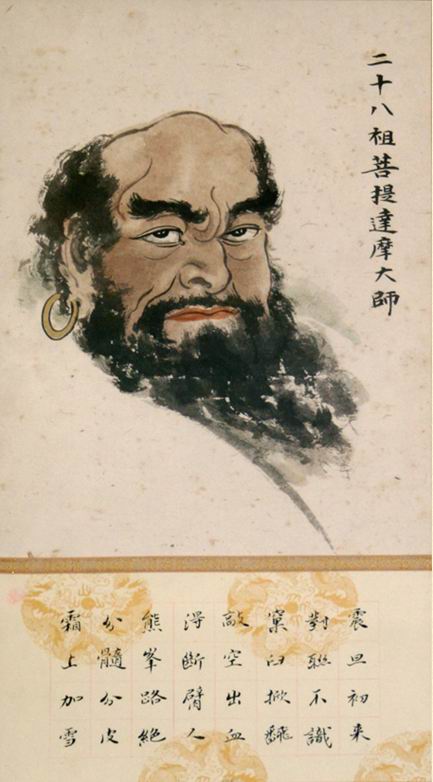
印度二十八祖菩提达摩祖师
祖 师,南天竺香至王三子也,姓刹帝利。初王供养般若多罗,因试以宝珠。祖发明心地,般若遂付法。偈曰:“心地生诸种,因事复生理;果满菩提圆,花开世界 起。”祖得法久之,念震旦缘熟,航海来梁。抵广,刺史萧昂,表闻武帝。乃诏见,问:“如何是圣谛第一义?”祖曰:“廓然无圣。”曰:“对朕者谁?”祖曰: “不识。”帝不契。祖由此渡江,涉魏,至嵩。少后得神光,授以大法。乃偕徒往禹门千圣寺,坐化,葬熊耳山。唐代宗谥“圆觉大师”,塔曰空观。
赞曰
震旦初来 对朕不识 窠臼掀翻 敲空出血
得断臂人 熊峰路绝 分髓分皮 霜上加雪

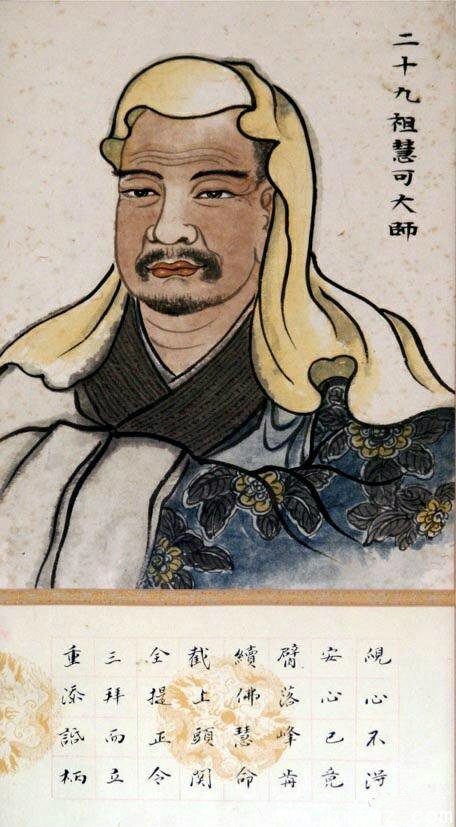
二十九祖慧可禅 师传法偈
本来 缘有地,因地种华生。
本来无有种, 华亦不曾生。

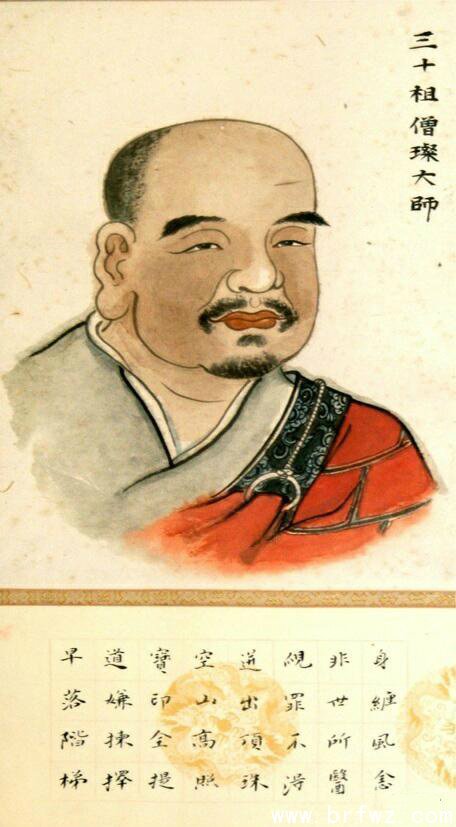
三十祖僧璨禅师传法偈
华种虽因地,従地种华生。
若无人下种,华地尽无生。

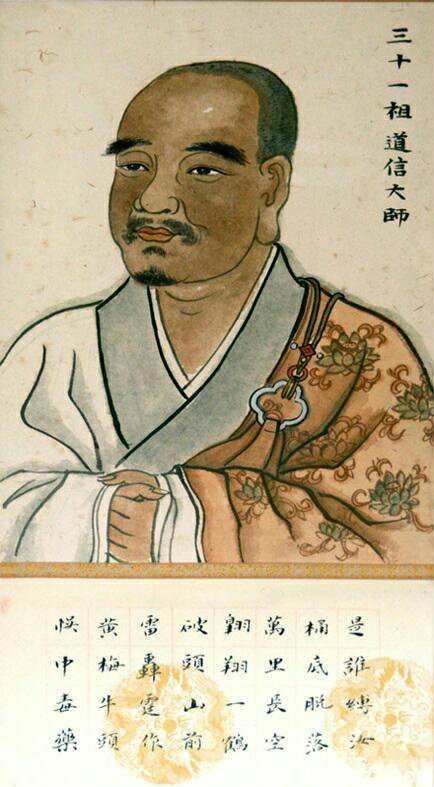
三十一祖道信禅师传法偈
华种有生性,因地华生生。
大缘与性合,当生生不生。

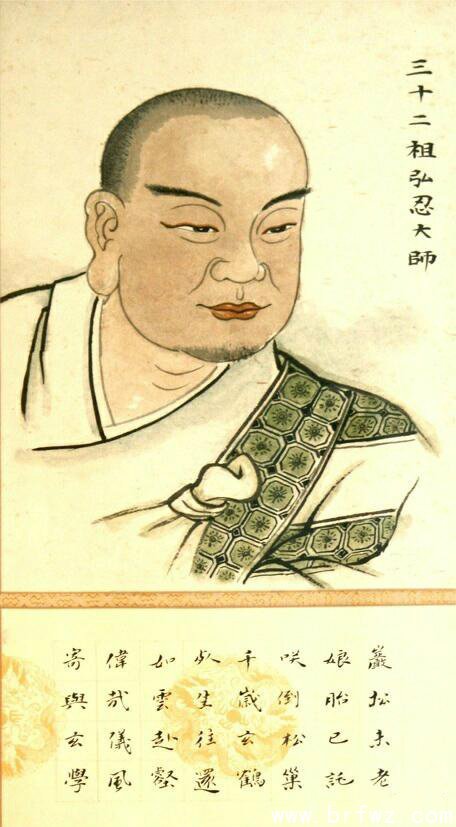
三十二祖弘忍禅师传法偈
有情来下种,因地果还生。
无情既无种,无性亦无生。

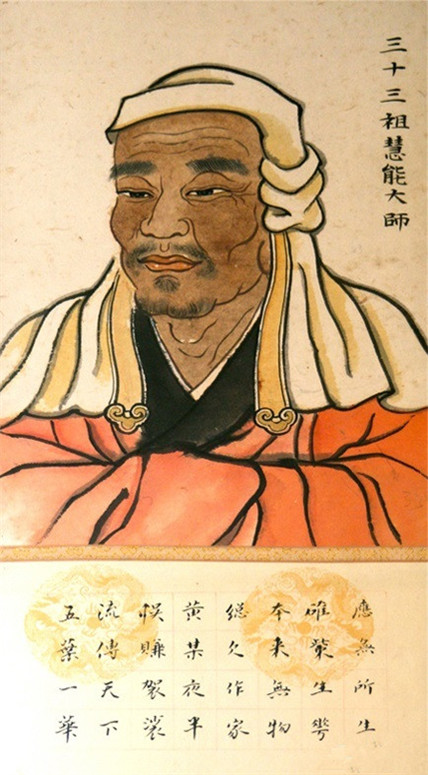
三十三祖慧能禅师传法偈
心地含诸种,普雨悉皆生。
顿悟华情已,菩提果自成。
The Six Chinese Patriachs
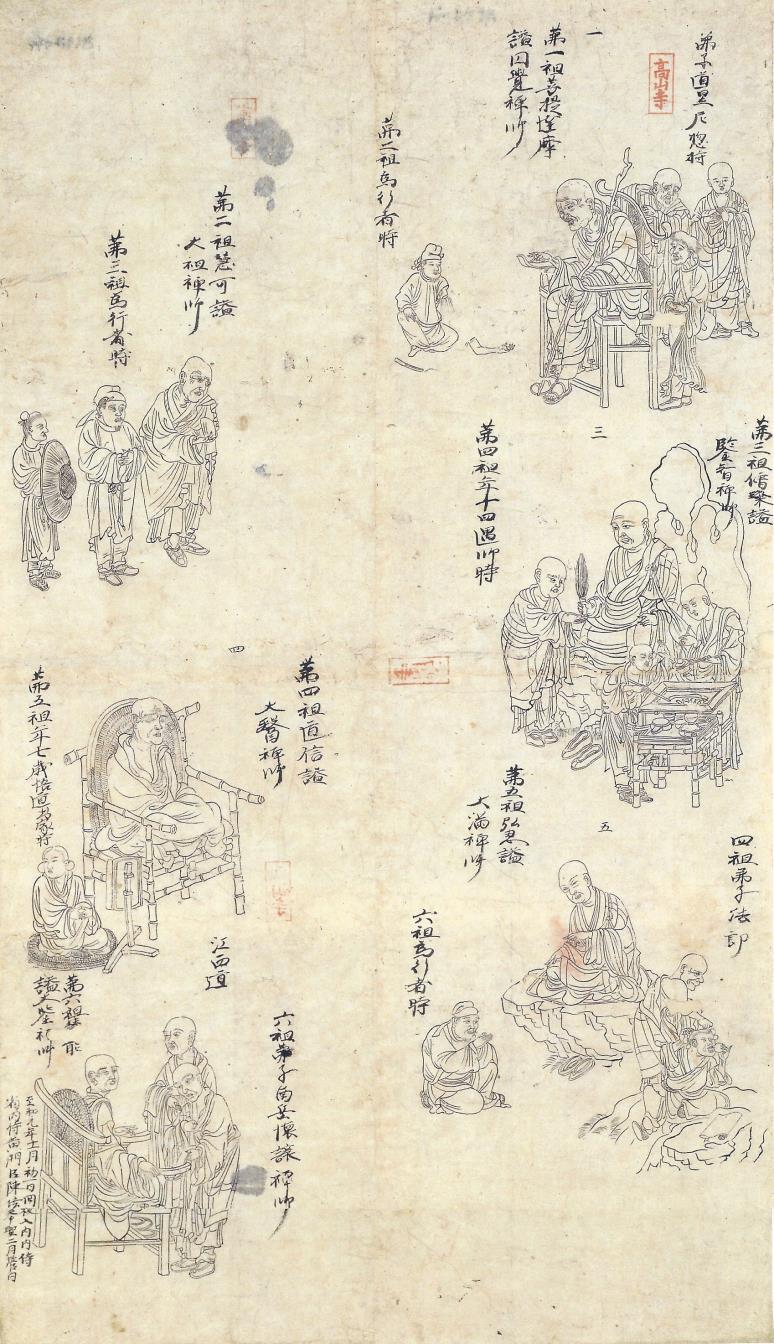
禅宗六祖像
Zensyurokuso
◆重文 平安~鎌倉時代
紙本墨画 縦 101.8cm 横 57.9cm
達磨宗六祖像とも。禅宗の初祖菩薩達磨、二祖慧可(えか)、三祖僧さん(さうさん)、四祖道信、五祖弘忍(こうにん)、六祖慧能(えのう)の肖像画。右下に第一祖達磨と行者(あんじゃ)であった時の二祖慧可を描き、左下には二祖慧可の横に三祖僧さんを描く。以下同様の展開で、連続性を持たせている。右上の達磨と慧可の図は、決意を示すため自らの腕を切り落とした慧可断臂(だんぴ)の場面である。左下に「至和元年( 1054 )十一月初一日開板」とあり、中国北宋の版本を写したものとわかる。院政期あるいは鎌倉時代初期の書写か 。
Six Patriarchs in the Transmission from Bodhidharma 達摩宗六祖像
Anonymous
Japanese 12th century copy from a Northern Song Chinese woodblock dated 1054
Hanging scroll, ink on paper, 102 x 58 cm
Kōzanji, Kyoto 高山寺
Important Cultural Property
Inscriptions translated into English (PDF)
The 1170s 梵像卷 Fanxiang juan (Roll of Buddhist Images)
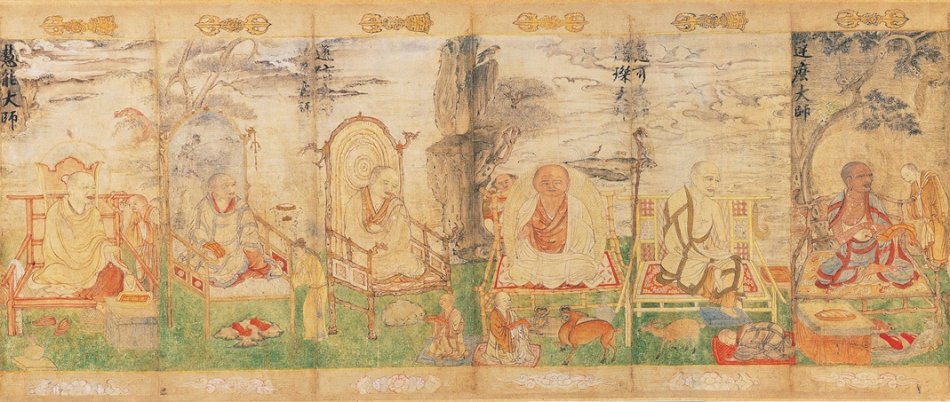
The 1170s 梵像卷 Fanxiang juan (Roll of Buddhist Images)
[Detail]
The Collection of National Palace Museum, Taipei

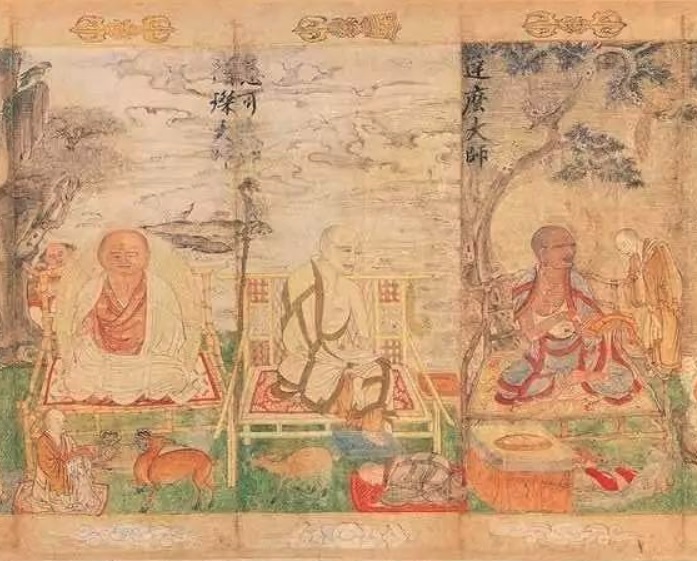
6 Dajian Huineng < 5 Daman Hongren < 4 Dayi Daoxin < 3 Jianzhi Sengcan < 2 Dazu Huike < 1 Bodhidharma
Contemporary art remakes of the 1170s 梵像卷 Fanxiang juan (Roll of Buddhist Images):
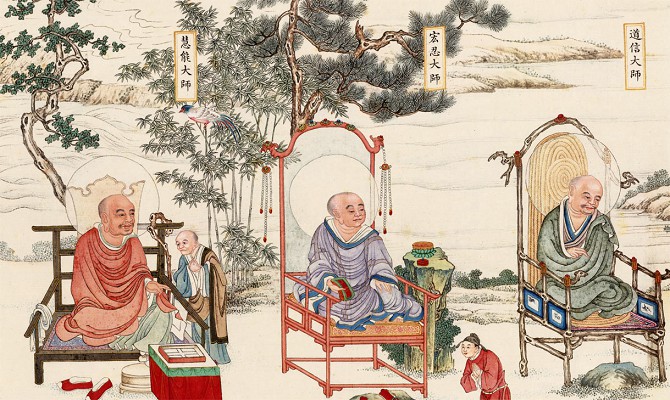
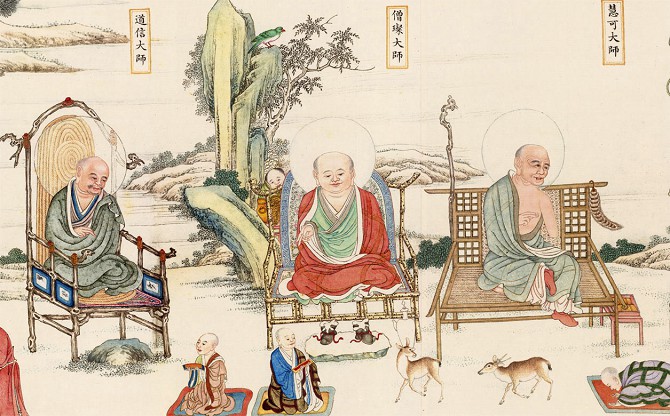
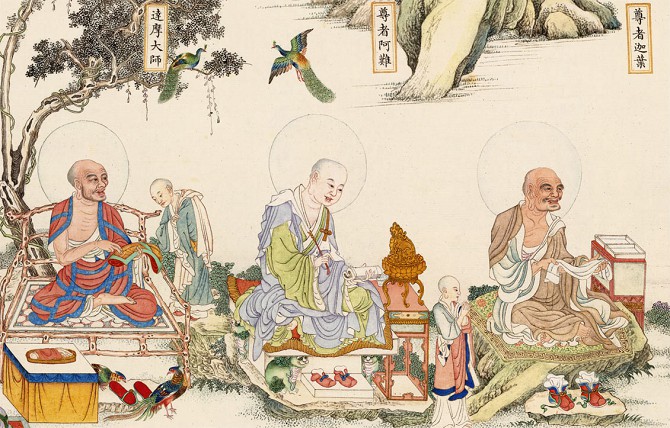
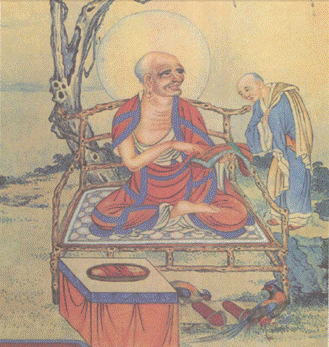
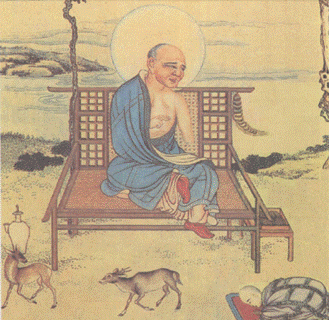
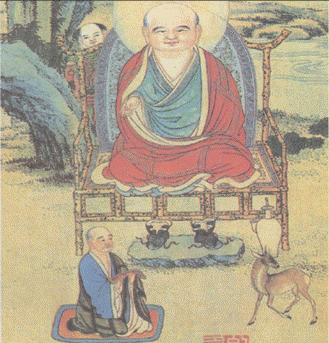
1 Bodhidharma > 2 Dazu Huike > 3 Jianzhi Sengcan
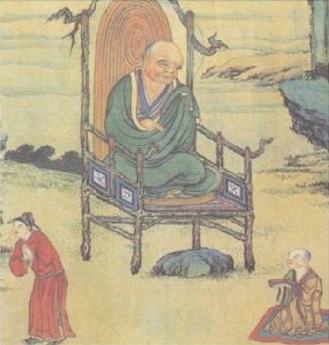
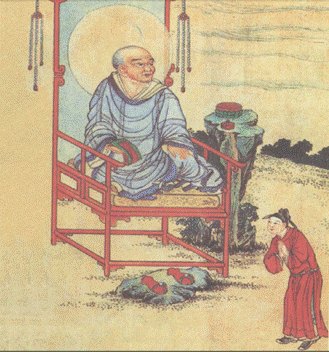
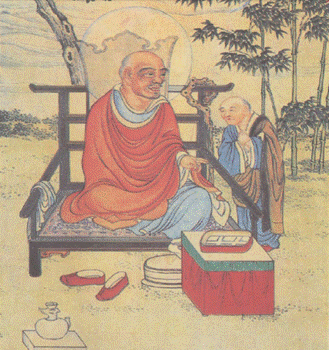
4 Dayi Daoxin > 5 Daman Hongren > 6 Dajian Huineng
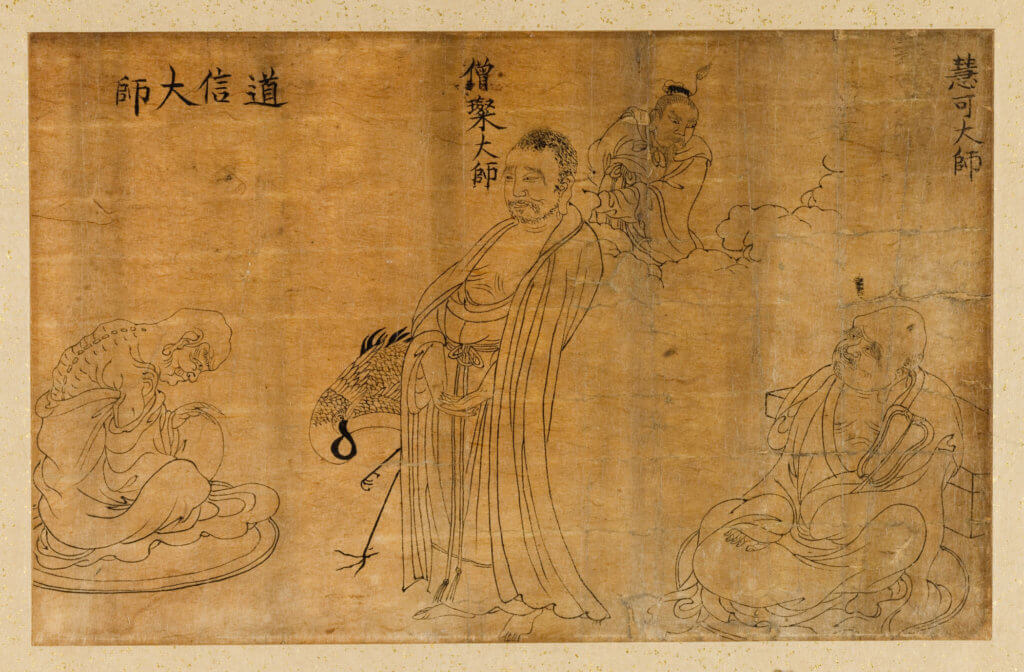
大毉道信 Dayi Daoxin (580-651) < 鑑智僧璨 Jianzhi Sengcan (529-613) < Huike 慧可 (487-593)
The Six Chinese Patriachs
Translated by Lu K'uan Yü [Charles Luk]
In: Ch'an and Zen Teaching, Second Series
Rider, London, 1961,
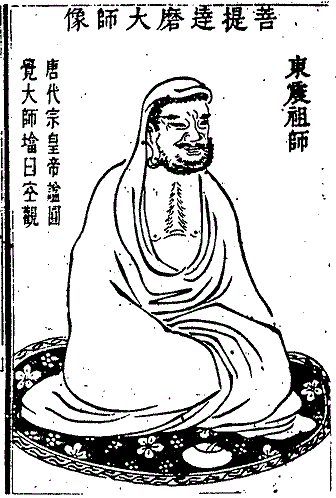
菩提達摩 (菩提達磨) Puti Damo, Bodhidharma, ?-532
[Bodai Daruma]
The Twenty-eight Indian Patriarch Bodhidharma
(The First Patriarch of China)
Gatha chanted when transmitting the Dharma to the Twenty-ninth Patriarch Hui K'o:
My aim in coming to this country
Was to transmit the Dharma and liberate all beings.
A flower of five petals
Cannot fail to fruit.
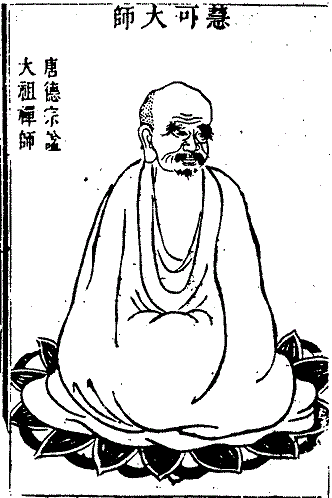
神光/太祖 慧可 Shenguang/Dazu Huike, 487-593
[Shinko/Taiso Eka]
The Twenty-ninth Patriarch Hui K'o
(The Second Patriarch of China)
Gatha chanted when transmitting the Dharma to the Thirtieth Patriarch Seng Ts'an:
From the seed-bed (of your mind)
(The Dharma) raises flowers.
Yet there is no seed
Nor are there flowers.

鑑智僧璨 Jianzhi Sengcan, 529-613
[Kanchi Sōsan]
The Thirtieth Patriarch Seng Ts'an
(The Third Patriarch of China)
Gatha chanted when transmitting the Dharma to the Thirty-first Patriarch Tao Hsin:
The sowing of flower-seeds requires a causal ground
From which the flowers will grow.
If no one sows there will be
Neither ground nor flowers.
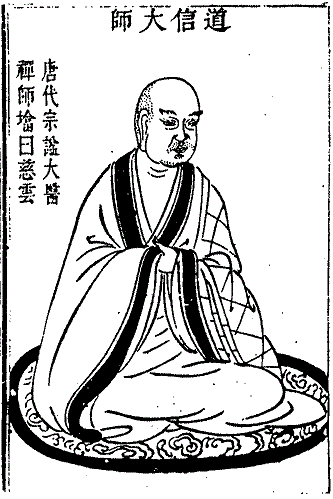
大毉道信 Dayi Daoxin, 580-651
[Daii Dōshin]
The Thirty-first Patriarch Tao Hsin
(The Fourth Patriarch of China)
Gatha chanted when transmitting the Dharma to the Thirty-second Patriarch Hung Jen:
Growth is latent in the seed
Which sprouts when planted in the causal ground.
This Great Cause unites with nature
At the time of growth, yet nothing grows.
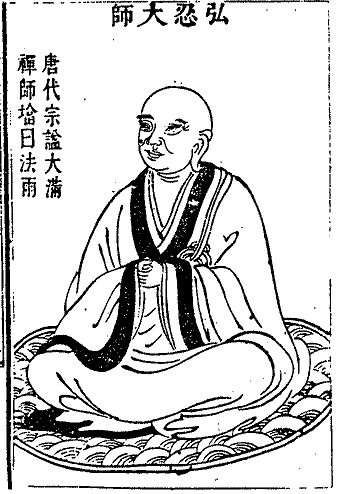
大滿弘忍 Daman Hongren, 602-675
[Daiman Kōnin]
The Thirty-second Patriarch Hung Jen
(The Fifth Patriarch of China)
Gatha chanted when transmitting the Dharma to the Thirty-third Patriarch Hui Neng:
The seed sown by a sentient being
In causal ground will soon bear fruit.
Without sentience there is no seed
And no fruit without nature.
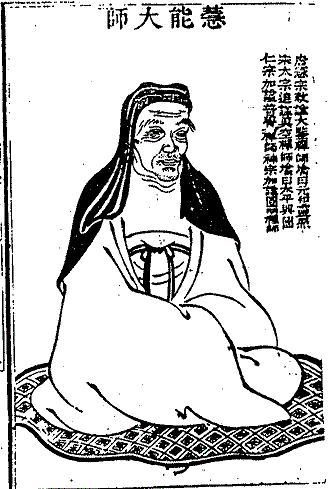
六祖大鑒慧[惠]能 Liuzu Dajian Huineng, 638–713
[Rokuso Daikan Enō]
The Thirty-third Patriarch Hui Neng
(The Sixth Patriarch of China)
Gatha chanted when transmitting the Dharma to his disciples:
The Mind-ground holds the (flower) seeds
Which sprout when falls the all-pervading rain.
The wisdom-flower of instantaneous awakening
Cannot fail to bear the Bodhi-fruit.
達磨六祖圖
The First Six Chan Patriarchs
by Dai Jin 戴進 (1388-1462)
15th century, Ming (1368-1644)
Handscroll, ink and colours on silk, 33.8 x 220 cm
Liaoning Provincial Museum

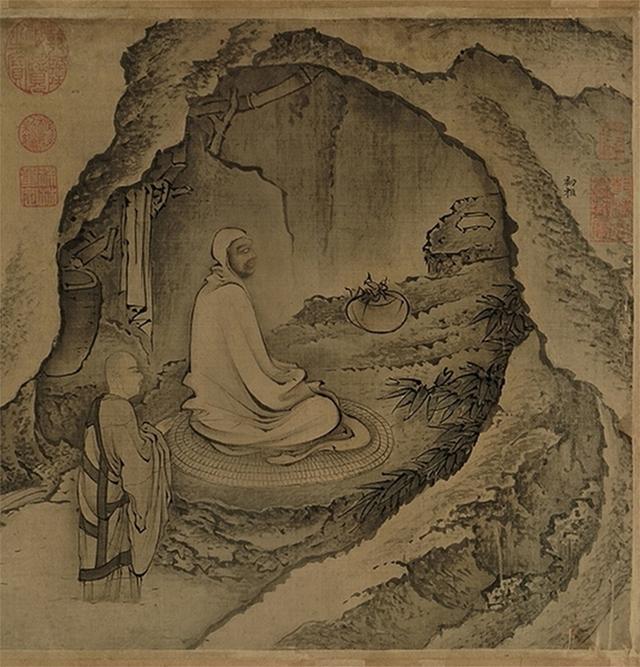
1. Bodhidharma, Putidamo 菩提達磨 (?-532/5)
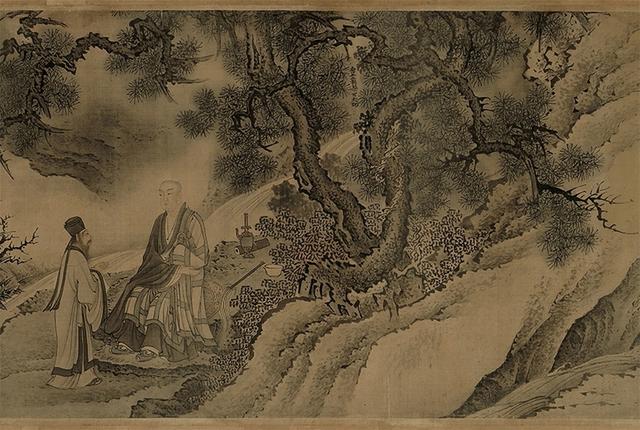
2. Dazu Huike 大祖慧可 (487-593)
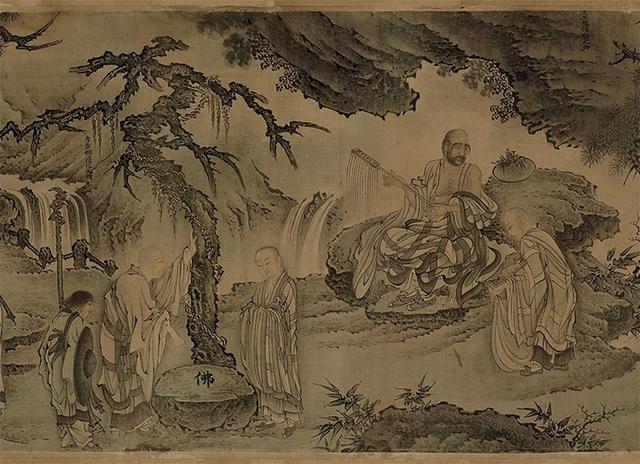
4. Dayi Daoxin 大毉道信 (580-651) < 3. Jianzhi Sengcan 鑑智僧璨 (?-606)
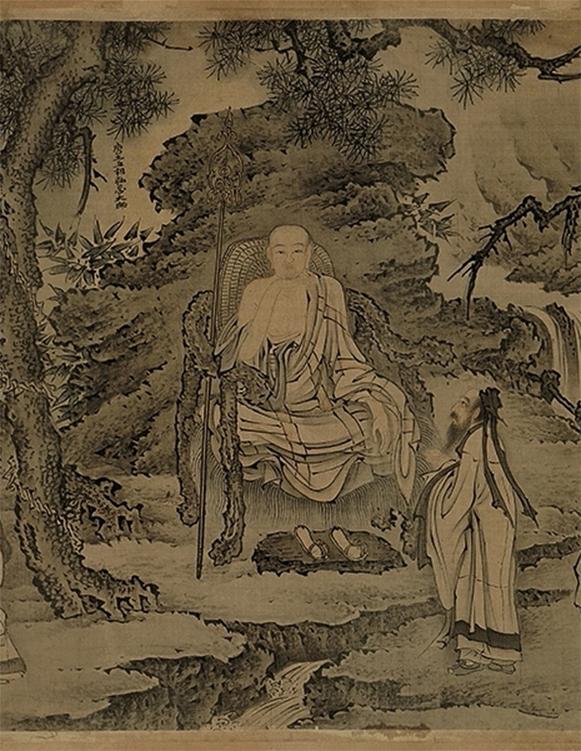
5. Daman Hongren 大滿弘忍 (601-674)
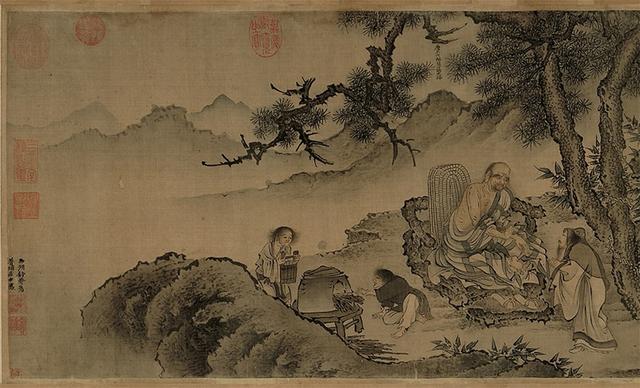
6. Dajian Huineng 大鑑慧能 (638-713)

The Six Chinese Patriachs
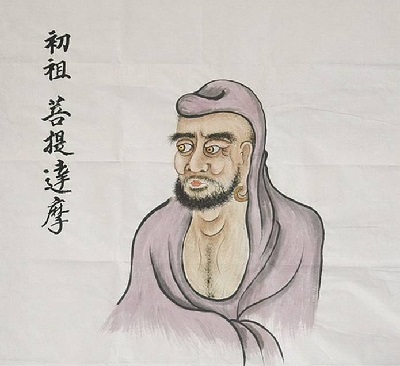


1. Bodhidharma, Putidamo 菩提達磨 (?-532/5)
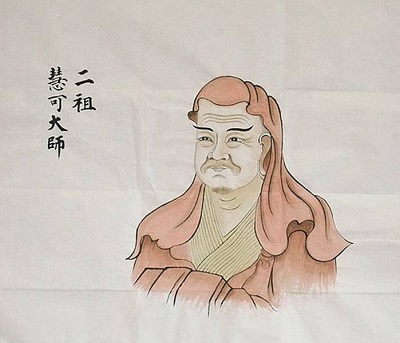


2. Dazu Huike 大祖慧可 (487-593)
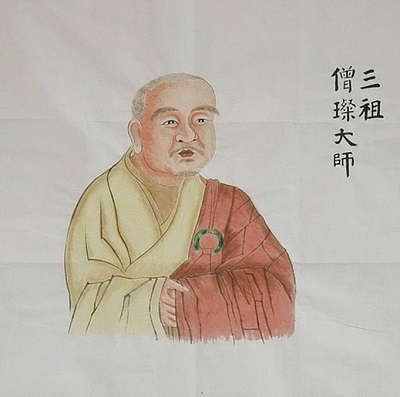


3. Jianzhi Sengcan 鑑智僧璨 (?-606)
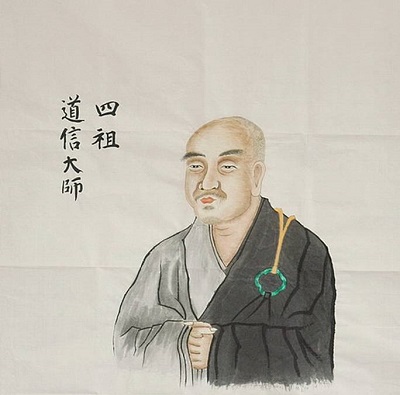


4. Dayi Daoxin 大毉道信 (580-651)
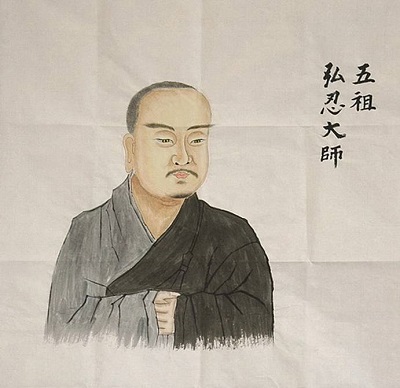


5. Daman Hongren 大滿弘忍 (601-674)
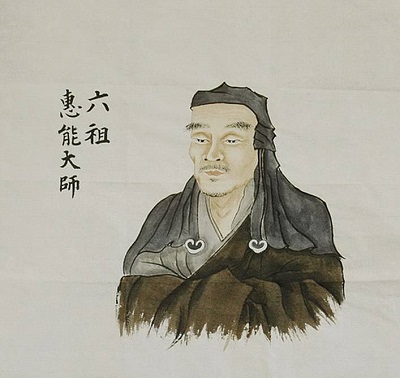


6. Dajian Huineng 大鑑慧能 (638-713)